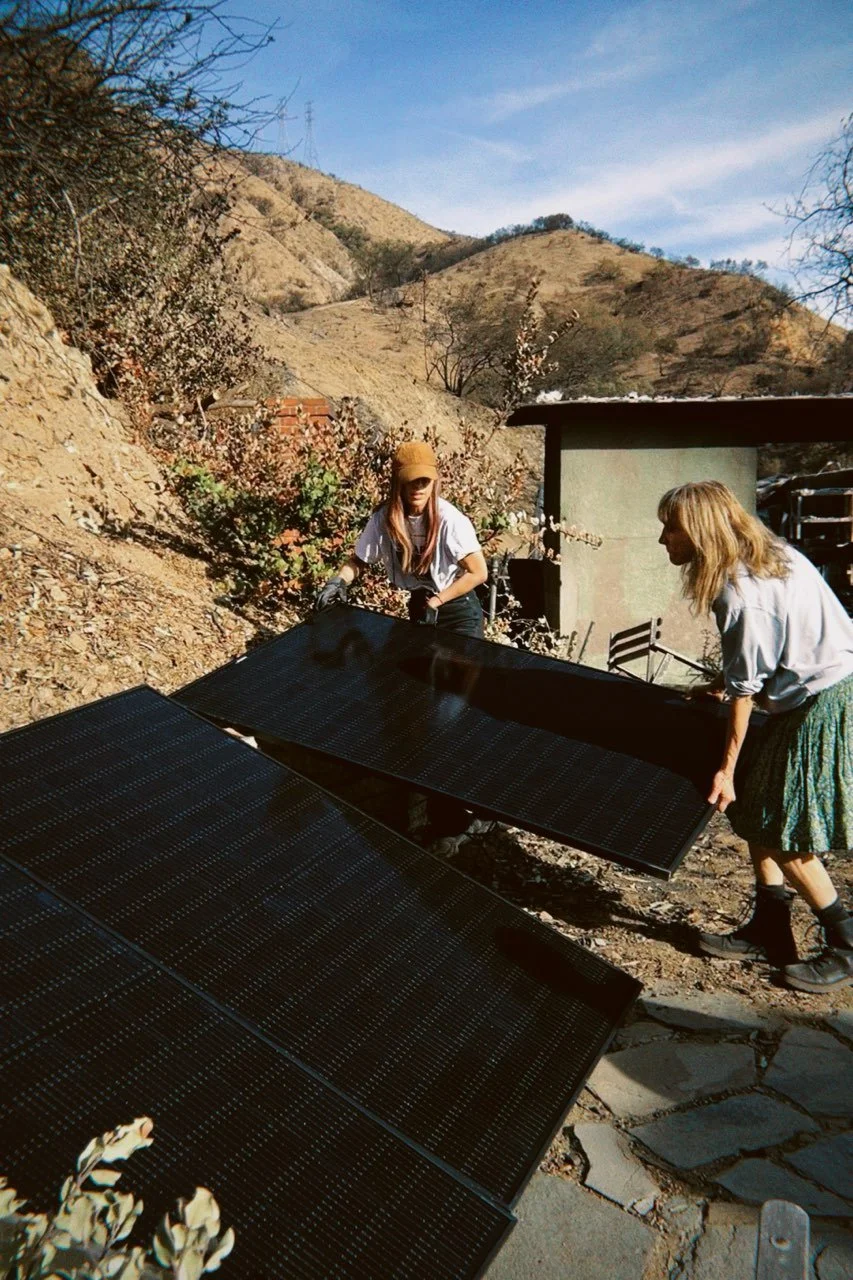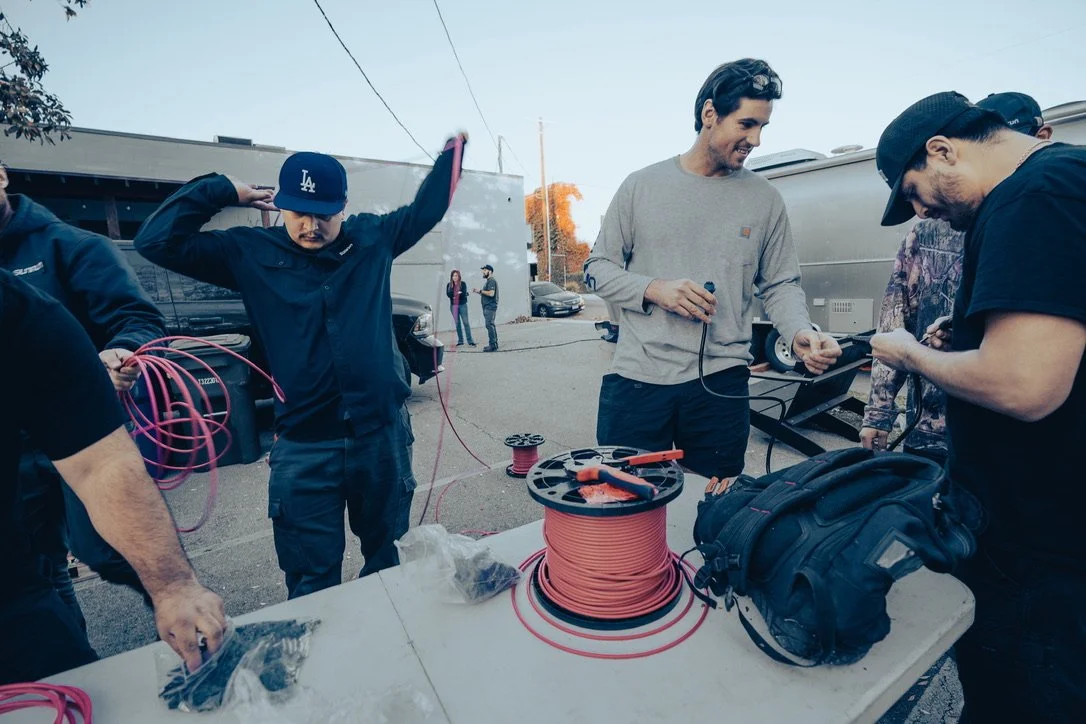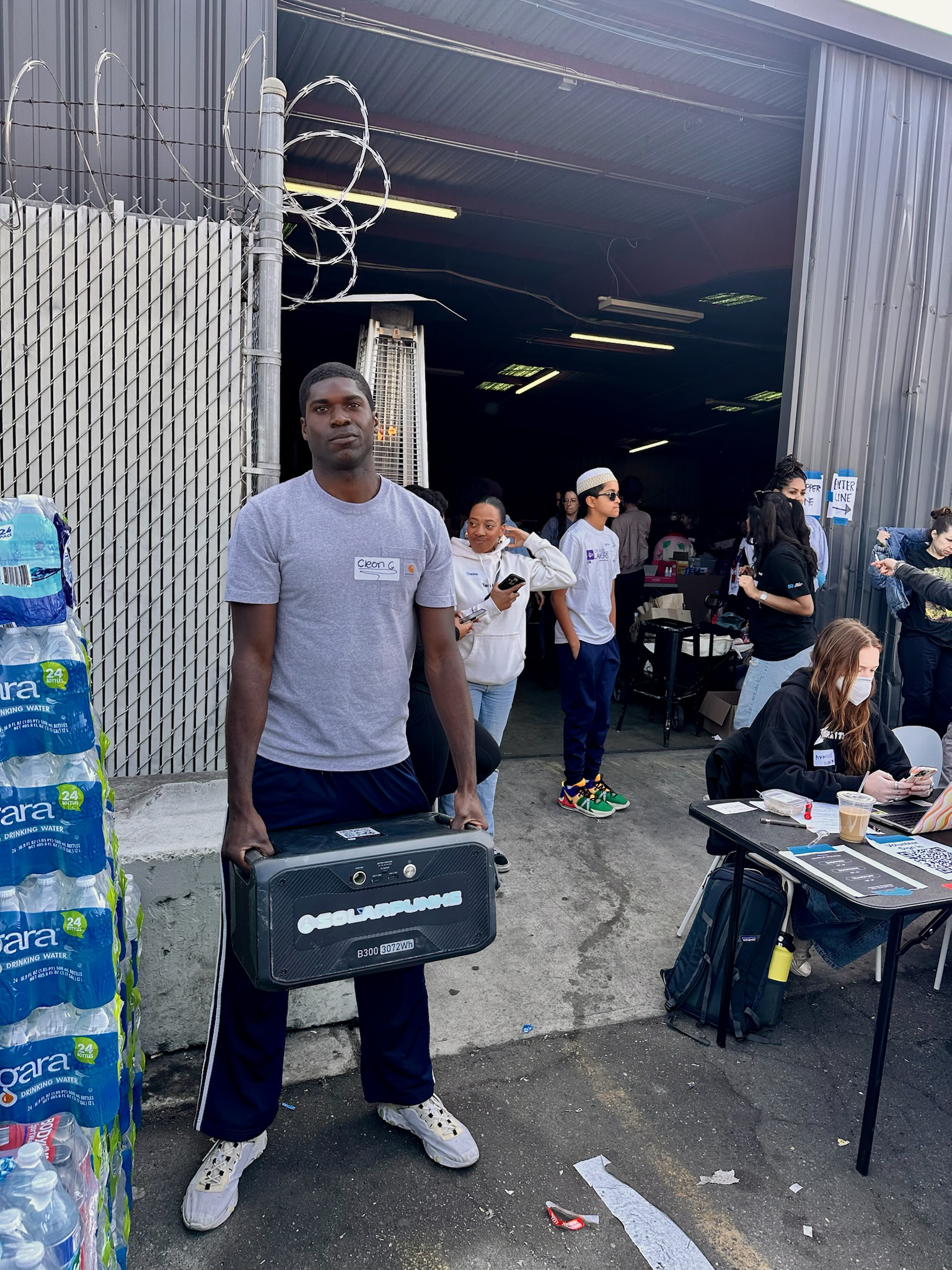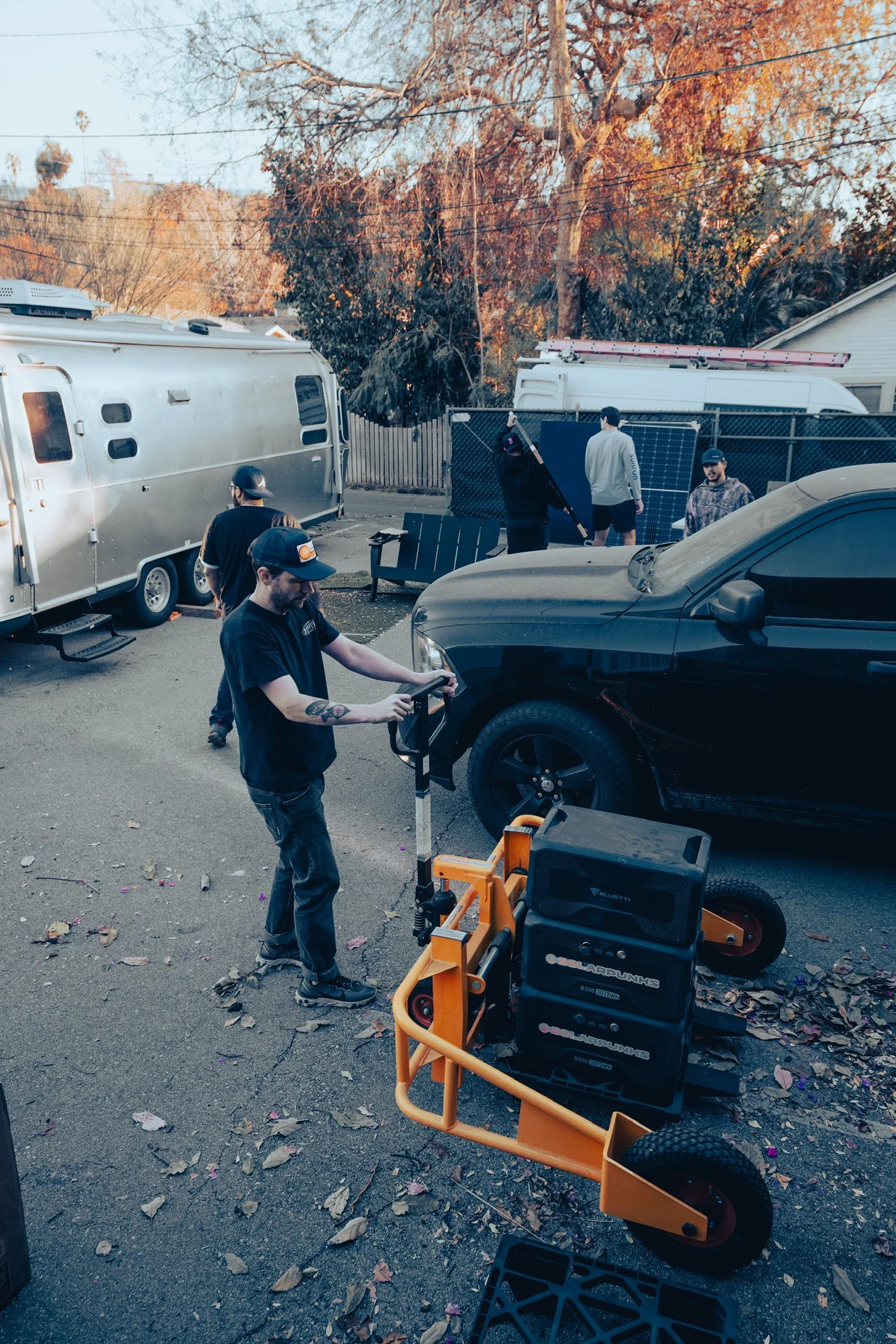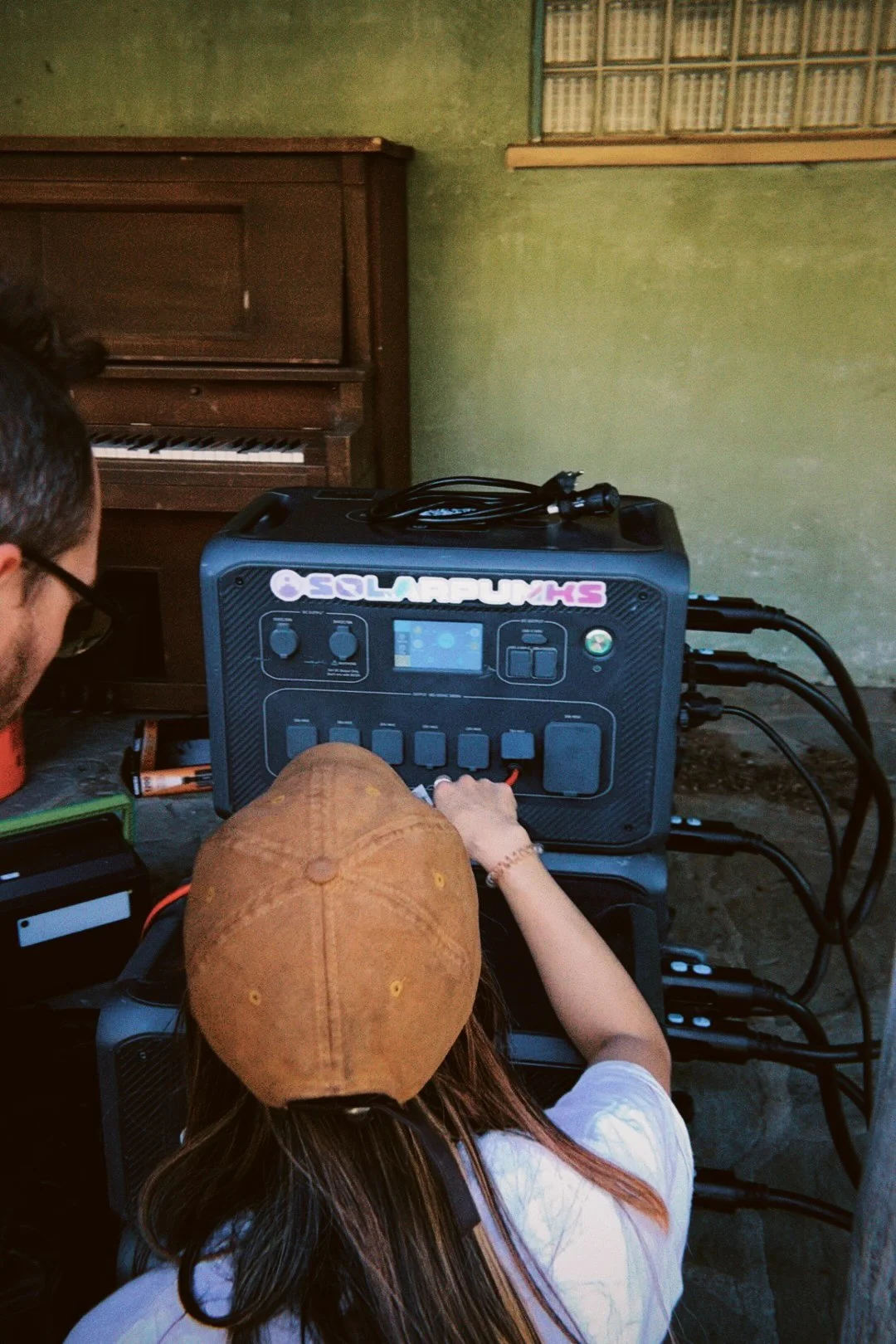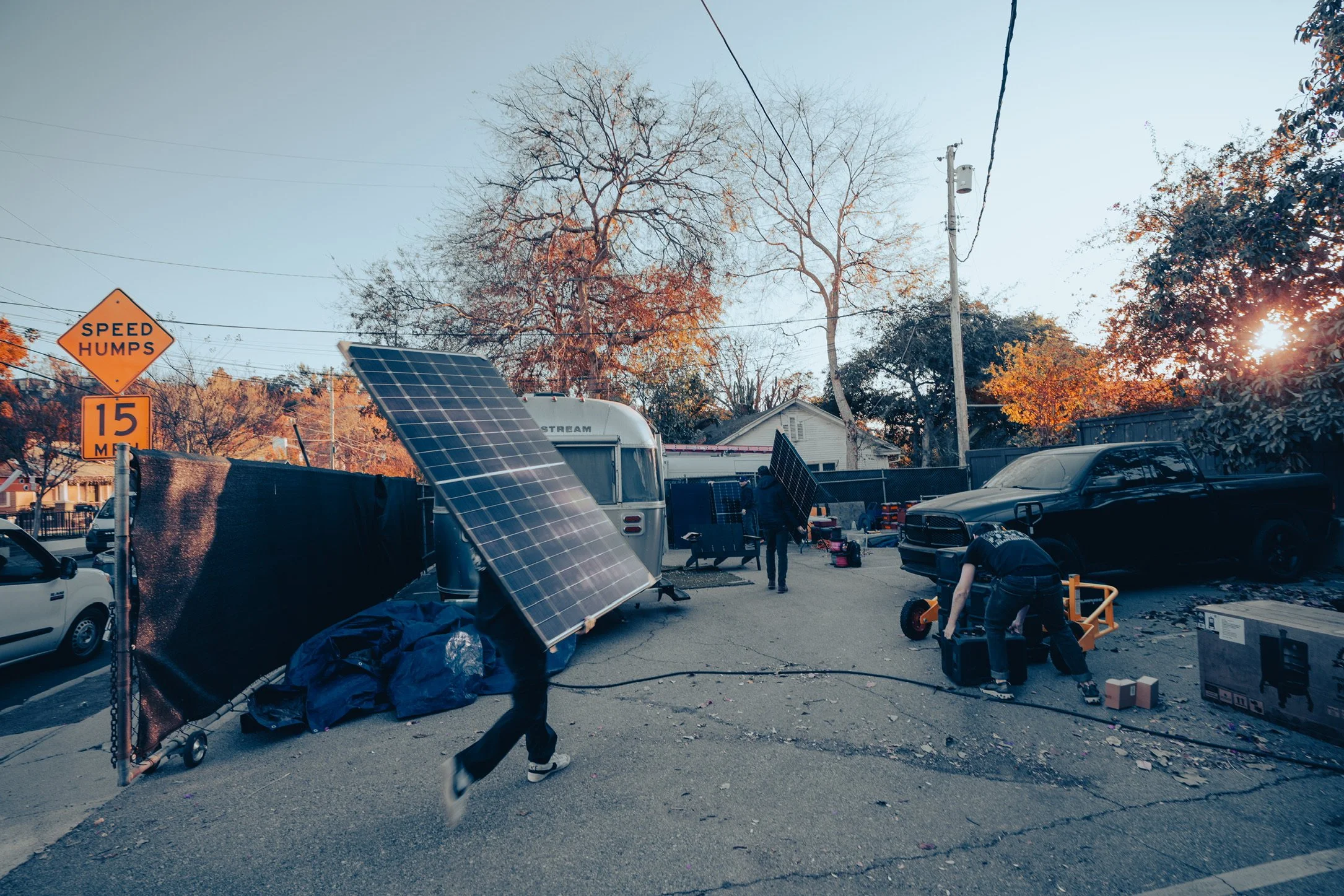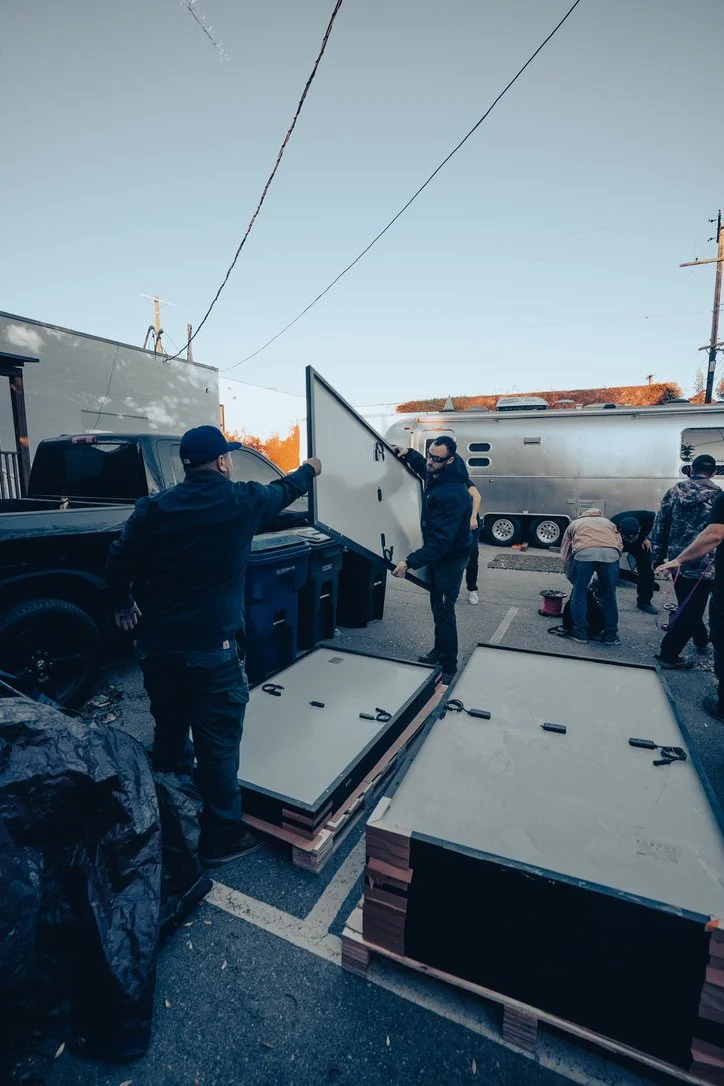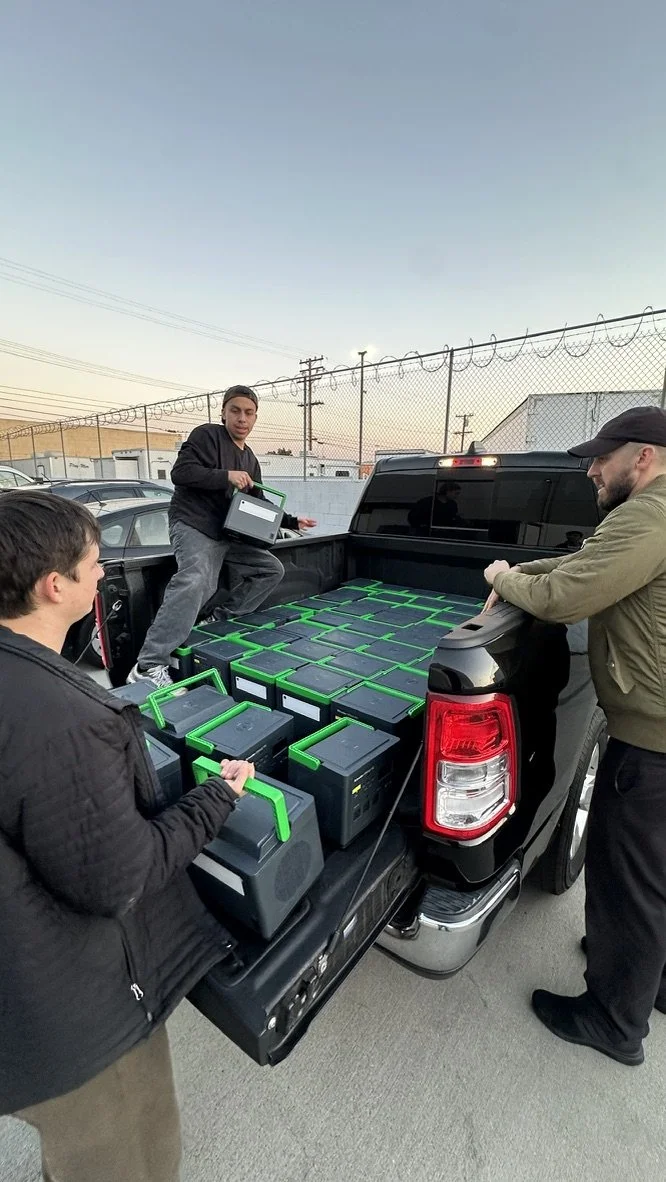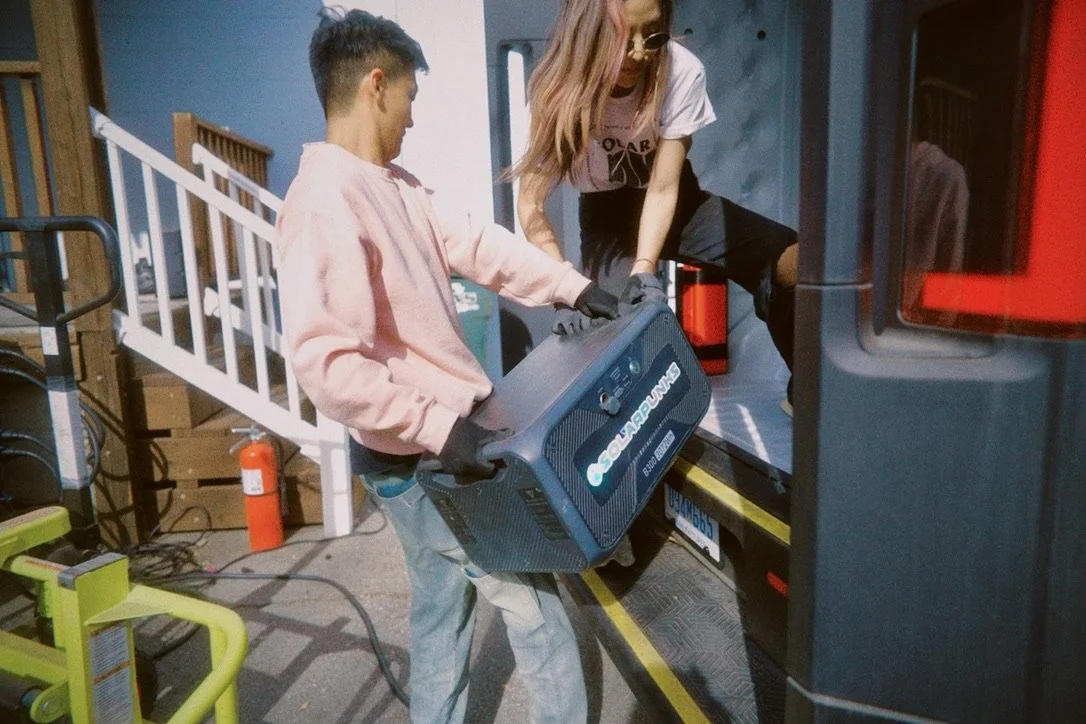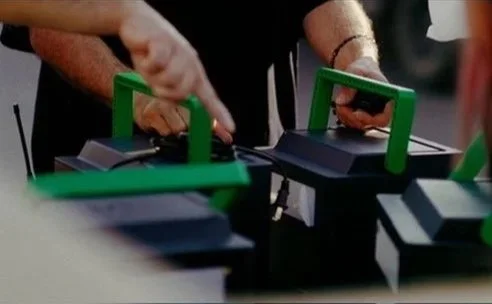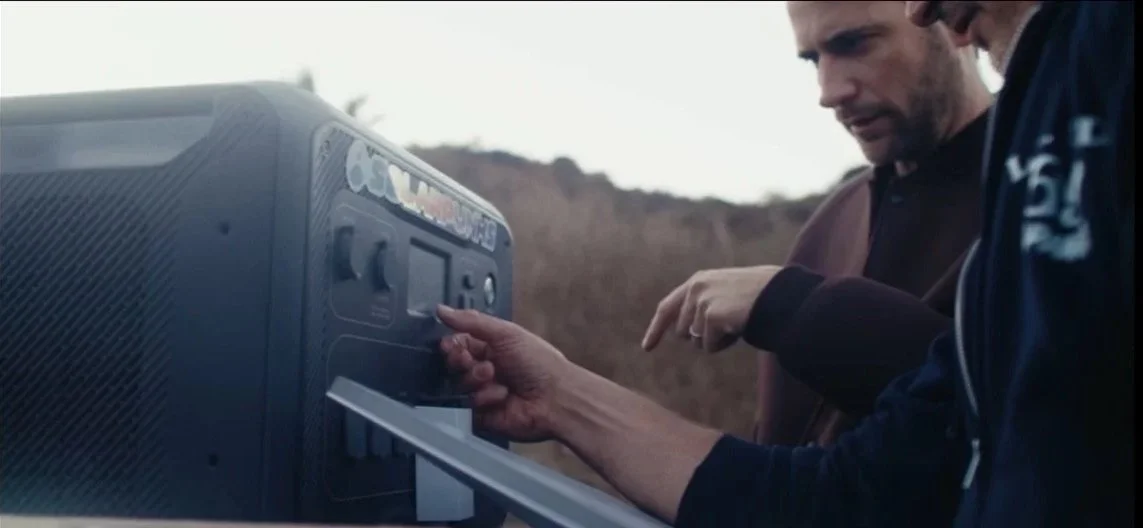Video by Damien Blue
LOCATION
Los Angeles, CA
In the wake of the Los Angeles wildfires–a climate disaster that devastated homes and threatened vulnerable communities–solar punks club reimagined disaster relief and developed a new kind of emergency response. Our team deployed mobile, distributed energy resources (DERs) to deliver clean, off-grid power to communities and first responders. Through solar microgrids and battery storage systems, we provided rapid and resilient power for emergency communications, medical equipment, and essential services–quietly and without emissions. From Los Angeles Fire Department battalions to neighborhood distribution centers, solar and battery systems enabled everything from lighting and cooking to critical field operations and medical device support.
WHY IT MATTERS
Electricity is an essential need for most communities and quickly becomes sacrosanct in disaster zones. From powering oxygen machines and refrigeration for insulin to first responder communications, access to energy can mean the difference between life and death.
When the electrical grid goes down, the default fallback is generators. Generators are powered by diesel–and diesel has critical downsides: emissions, noise, logistics, and fire risks. We are building a better response model, one that emphasizes local resilience and regenerative technologies, as climate disasters continue to increase in frequency and severity.
WHAT WE ACCOMPLISHED
We deployed mobile energy assets throughout Los Angeles.
LAFD stations and battalions stayed connected through Starlinks and other first responder support
First responders received nebulizer detox treatments and chiropractic care, all powered by solar and battery
Vulnerable individuals received donated portable battery systems and backup power to run life-sustaining medical equipment
Community distribution hubs operated cleanly, safely, and quietly, offering food, shelter, and other essential care
Pet rescue operations used solar power for in-field operations to track and reunite animals with their families.
The future of disaster relief is decentralized
This project is a proof of concept and, we hope, a glimpse into what is possible: a more resilient future, created collectively and intentionally. We envision a future where neighbors support neighbors, where renewables expedite recovery, and where infrastructure failure doesn’t mean community collapse. With the right tools and networks in place, disaster relief can be local, regenerative, and rapid. We’re committed to scaling this work, improving our processes, and sharing what we learn along the way.
Special thanks to additional support from:
SunRun
Rivian
Tesla
To support advancing clean energy in disaster relief response, get in touch with us.
